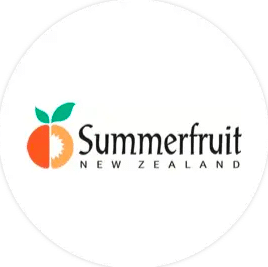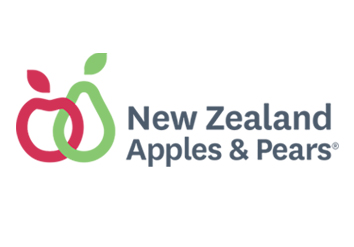
Richard Mills, Summerfruit NZ Market Support
I have had the pleasure of a couple of trips to Central Otago this month so I thought we might compare and contrast the Hawke’s Bay and Central Otago stonefruit industries. Are the districts complimentary or competitive?
Climate/Geography
It’s further south and during the winter, much colder. More than that there is usually snow hanging around the nearby hills at this time of the year. The three main areas based around Cromwell, Earnscleugh/Alexandra and Roxburgh are different to each other as well. Roxburgh seems to me to be a difficult location to grow fruit, it’s the furthest south and open to the weather that roles up from Southland. They are resilient people and need to be so, but the COVID-19 labour scenario might be a step too far for them.
Cherries dominate the more northerly Cromwell area, Earnscleugh/Alexandra has a good mixture of all the five stonefruit and Roxburgh tends to have lots of apricots.
The Clyde research station has accumulated 1036 Richardson Chill Units and Twyford 760 to date. For reference, Clyde is having a good cold winter and Twyford is not.
At times the fog will come and settle in for two or three continuous weeks, which can make even the long-term locals feel a bit emotionally flat. Then the sun comes back and the views from every orchard are just stunning.
Here we can drive from Bay View to Havelock North in under 30 minutes, whereas the drive time from some of the cherry blocks at Bendigo outside of Cromwell to Teviot takes a good hour. Napier airport to the closest stonefruit block – 5 minutes. Queenstown airport to the closest stonefruit orchard is 45 minutes. The area is just a bit isolated, which is part of the charm.
In a pre-COVID-19 world, pruning would not be the first choice of things to do during the depths of winter, it’s just too cold. And that’s ok for stonefruit that we might want to prune outside of the winter bacterial infection time.
That cold difference is evident at harvest time with the same variety blooming and harvesting 3-4 weeks later in Central Otago. That area difference is complimentary in the local market with one area starting up as the other is winding down. This is what occurs most of the time, but when Hawke’s Bay is a bit late and Central a bit early, the marketing people can get jumpy. There is a longer growing season in Hawke’s Bay which means that some of the very late cultivars will not ripen properly in Central, they just run out of growing degree days.
Support Services
There is a PFR station in Clyde but it is significantly smaller and with less capacity than the station in Havelock North. They focus on plant physiology and plant breeding and have done a lot of work on frost mediation in the past. You have Fruitfed, Horticentre and Farmlands competing for business in Hastings as do the Central Otago growers but the technical leads for those companies are based in Hastings. Other companies such as AsureQuality will tend not to have an office in Central but may well do in Hawke’s Bay. We are fortunate to have New Zealand Apples & Pears based here and we benefit from the R&D that occurs locally.
Summerfruit NZ bases itself in Wellington and not in either region, mostly so that government and quasi-governmental organizations are close by when needed.
Area Composition
My previous role in R&D was happily based in Hawke’s Bay as so many different crops are grown here. Onions, green vegetables, covered berries, cherries, apples, kiwifruit, figs, grapes; the list goes on. Central Otago from drive past viewing tends to be some grapes, a few apples and stonefruit, the majority of that now in cherries. And how the cherry area is growing. The total New Zealand area in stonefruit is about 2300 ha; and I know of several blocks in the 80-100 ha region that are being developed at the moment. I guess that the area in stonefruit in Hawke’s Bay is static or maybe even decreasing, being replaced with apples while central is in an expansion phase. This expansion reminds me of what happened in Hawke’s Bay with apples 20 years ago, more of a corporate mindset and expansion to non-traditional growing areas such as Central Hawke’s Bay.
Each area has its dominant grower, some middle-sized blocks a quite a few small players. I visited a newly developed 3 hectare cherry orchard in Cromwell which is not unusual, but here that three-hectare block would be part of a larger pipfruit enterprise.
Cherries dominate the more northerly Cromwell area, Earnscleugh/Alexandra has a good mixture of all the five stonefruit and Roxburgh tends to have lots of apricots.
People and Workers
The relative isolation, small variation in crop types and small permanent population size does not work in Central’s favour. According to Wikipedia there are 23,100 (2020) people in Central Otago in total, with Hawke’s Bay nearly 8 times that with 178,600 people. All of Central Otago is about half the size of Hastings. In summer it’s a fantastic place to be on a working holiday but once the harvest season is over workers tend to want to be somewhere else, somewhere warmer. Much as Hawke’s Bay loses workers to kiwifruit, Central loses workers to Hawke’s Bay apples.
I am starting to see a few Hawke’s Bay people turn up in managerial roles down there, again the pool of skilled people is a little shallow in an area that is expanding. There is opportunity for some younger growers and support people to go and get experience in a different area and bring back an expanded skill set.
They are really concerned about where the seasonal workers will come from for 2021-22, much as Hawke’s Bay is, but with more of an anxious edge. This season just gone we sort of got away with getting the job done, and Central did to, but only because rain destroyed a big part of the export cherry crop.
Gate Sales
While we still have the occasional gate sales enterprise in Hawke’s Bay, that tradition seems to be hanging on a little longer and stronger especially at the entrance to Cromwell and through Roxburgh. I’m picking that it’s the passing traffic being funneled through these areas much like Pakowhai Road used to be, and as Kirstin’s Corner is now.
Innovation
Not all cherry blocks have bird exclusion netting, but more and more do. Imagine being able to pick a viable cherry crop in Hawke’s Bay without netting – not a chance. Rain covers are popping up on a few blocks and there is a cherry crop being grown inside what might be considered a big greenhouse. This orchard will be directly competing with the climatically earlier cherries from here.
Last week, I was shown some of the packaging that was being developed and used by New Zealand Cherry Corp for both export and local market sales and it looked pretty impressive. E-marketing from a dedicated cherry block was one of the packs, as was a high end box with only 48 fruit, aiming to be sold for a silly price in China.
Another of the innovators is Mike Casey at Forrest Lodge, Mike is creating a niche for himself and telling the world about it, and it’s this sharing of innovation that I appreciate. There’s a tag line that I remember from the avocado presentation at the Sensational Summerfruit roadshow, ‘take from the best and give with the rest’. When the electric tractor arrives all of the orchard operations will be driven from solar power generated on the orchard – including the wind machines. Hop onto his website at https://www.forestlodge.nz/
So, is Central Otago stonefruit complimentary or competition for Hawke’s Bay? Neither and both I think is the answer and as always, the real answer is in the detail. The largely export driven cherry crop can be an innovator and not directly competitive on the local sales, until something goes wrong, then it is very disruptive. Like the Bay View crop is to later areas on the plains so are Central Otago apricots, nectarines, peaches and plums; just that bit later until there is very big crop and cool stored fruit comes into play.
Everyone is trying to make a buck, sometimes with success and sometimes not within in the same industry. We are all competitive with each other to some extent and most of the time manage to play together nicely.






